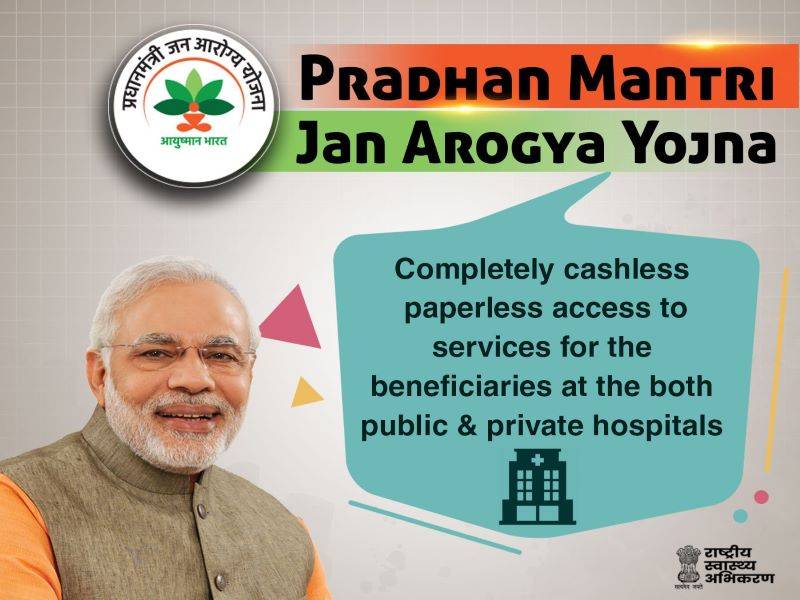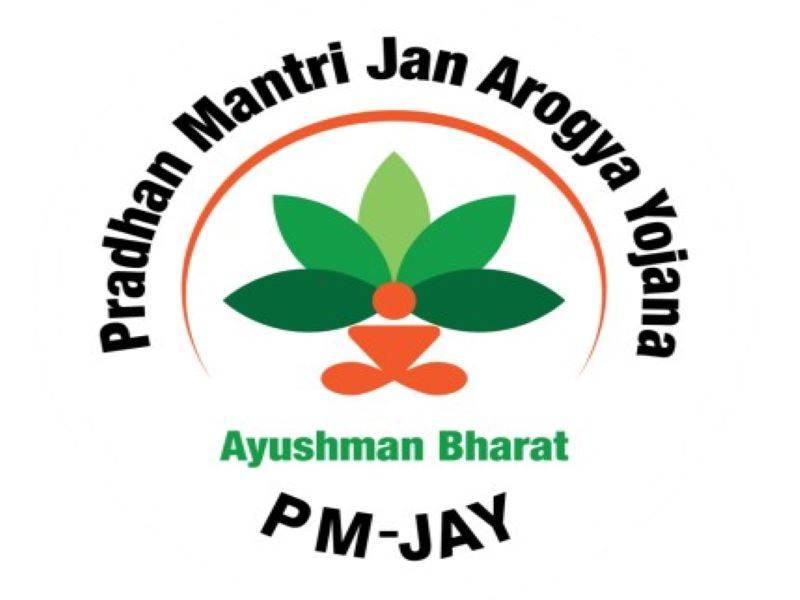
Pradhan Mantri Jan Arogya Yojana (PM-JAY) or the Ayushman Bharat is a part of the Indian government's National Health Policy which aims to provide free health coverage at the secondary and tertiary level to its bottom 40% poor and vulnerable population and was launched in September 2018, under the aegis of Ministry of Health and Family Welfare. PMJAY became the world’s largest and fully state-sponsored health assurance scheme which covers a population of the combined size of USA, Mexico and Canada.
The significance of PMJAY has to be seen in the context of existing health conditions and health service delivery systems in India under the mission of Saab ka Saath; Saab ka Vikas i.e. create equal opportunity and equal development for all.
Healthcare is one important factor for all livelihoods both in the urban and rural sector and determines outcomes such as GDP of nation, development, suitability etc. The World Health Organization recommends that a country should spend at least 4% of its gross domestic product (GDP) on health but India’s health expenditure is at 3.9% of GDP which is comparable to this norm.
However, the Health Ministry’s National Health Accounts show that total government health expenditure is only an appalling 1.1% of GDP. Thus, well over 70% of health expenditure is privately financed. More than 62% is direct out of pocket (OOP) spending by patients as against the WHO recommended OOP ceiling of 40%. The allocation of public health expenditure is even more disappointing. Preventive health spending is more equitable and much more cost-effective in improving health standards, a much bigger bang for the buck compared to curative care. But less than a quarter of India’s meagre public health expenditure is allocated to preventive care.
So, the continuing high incidence of communicable diseases is still there. Meanwhile, there is a rising incidence of noncommunicable diseases with income growth, lifestyle changes and environmental degradation, resulting in a rising total burden of disease. Despite absorbing the bulk of public health expenditure, the public curative care system has not managed to cope with this. Patients are faced with ill-equipped primary health centres, run by poorly trained staff, a broken referral system and crowded hospitals.

Overburdened and disgruntled medical staff, long treatment queues, touts and supposedly free but missing drugs have increasingly pushed patients towards private providers, who now account for over 70% of healthcare provision. However, private provision is expensive and unaffordable beyond a point except for the rich. Hence, patients turn to cheaper traditional treatments live with their ailments or simply die prematurely.
It is against this grim background that we need to assess the PMJAY programme. Statutory health insurance (SHI) programmes like PMJAY become necessary because consumers do not know in advance whether they will need treatment or not, but if there is a catastrophic health event, the high cost of treatment can impoverish families. Mostly the health expenditure is unaffordable for most Indians, especially the most vulnerable. Risk pooling through health insurance addresses this problem. However, profit-driven private health insurance leads to adverse selection. Those most likely to need treatment may be excluded from private insurance. Hence the urgent need for SHI.
Apart from that PM-JAY is one significant and portable step towards the achievement of Universal Health Coverage (UHC) and Sustainable Development Goal - 3 (Good Health and Well-Being). PMJAY provides insurance up to Rs 5 lakh per family per year for in-patient secondary and tertiary treatment. It will cover over 100 million vulnerable families, which is about 500 million people, the poorest 40% of India’s population. Treatment would be provided by empanelled public and private hospitals. A list of 1,350 procedures across 23 specializations, including pre and post-hospitalisation, diagnostics, and medicines have been prepared along with their rates. A performance-linked payment system has also been designed to incentivise hospitals to improve service quality and patient safety.
The hospitals would be reimbursed through the appointed insurance agencies or assurance societies/trusts or some combination of the two. Apart from this many memorandums of understanding (MoUs) have been signed with 30 states and Union territories and are flexible and allow states to fine-tune the scheme to suit their circumstances. The states are responsible for empanelling the hospitals as health is a state subject. States are expected to contribute 40% funding for the scheme, but states like Telangana, Odisha, Delhi, Kerala, and Punjab have already refused to implement the scheme.
The ill-equipped public sector health capacities call for necessary partnerships and coalitions with private sector providers. In such circumstances, the provision of services can be ensured only if the providers are held accountable for their services. The first-order priority should be to draw up a roadmap for universal health coverage, through continuous up-gradation of the public sector infrastructure.
All relevant inter-sectoral action linking health and development should be brought together to bring down the disease burden by providing access to clean drinking water, sanitation, garbage disposal, waste management, food security, nutrition, and vector control. Incorporation of Swachh Bharat programme into Ayushman Bharat can be one step towards it. Then we can expect for Swasth Bharat along with Swachh Bharat under PMJAY.















